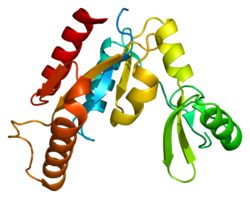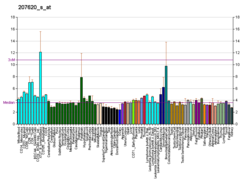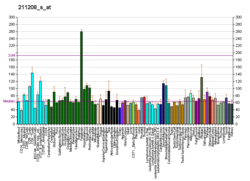Peripheral plasma membrane protein CASK is a protein that in humans is encoded by the CASK gene.[5][6] This gene is also known by several other names: CMG 2 (CAMGUK protein 2), calcium/calmodulin-dependent serine protein kinase 3 and membrane-associated guanylate kinase 2. CASK gene mutations are the cause of XL-ID with or without nystagmus and MICPCH, an X-linked neurological disorder.
- ^ a b c GRCh38: Ensembl release 89: ENSG00000147044 – Ensembl, May 2017
- ^ a b c GRCm38: Ensembl release 89: ENSMUSG00000031012 – Ensembl, May 2017
- ^ "Human PubMed Reference:". National Center for Biotechnology Information, U.S. National Library of Medicine.
- ^ "Mouse PubMed Reference:". National Center for Biotechnology Information, U.S. National Library of Medicine.
- ^ Dimitratos SD, Stathakis DG, Nelson CA, Woods DF, Bryant PJ (July 1998). "The location of human CASK at Xp11.4 identifies this gene as a candidate for X-linked optic atrophy". Genomics. 51 (2): 308–309. doi:10.1006/geno.1998.5404. PMID 9722958.
- ^ "Entrez Gene: CASK Calcium/calmodulin-dependent serine protein kinase (MAGUK family)".






